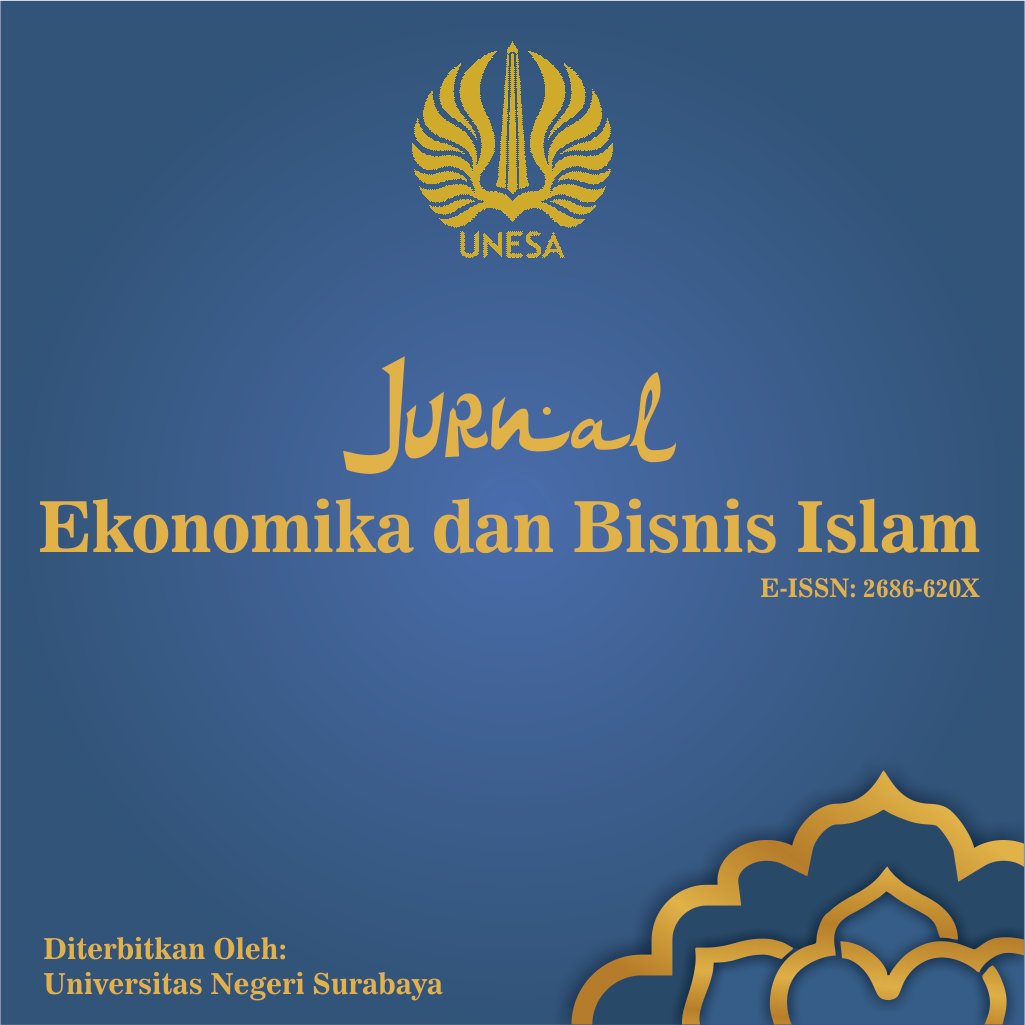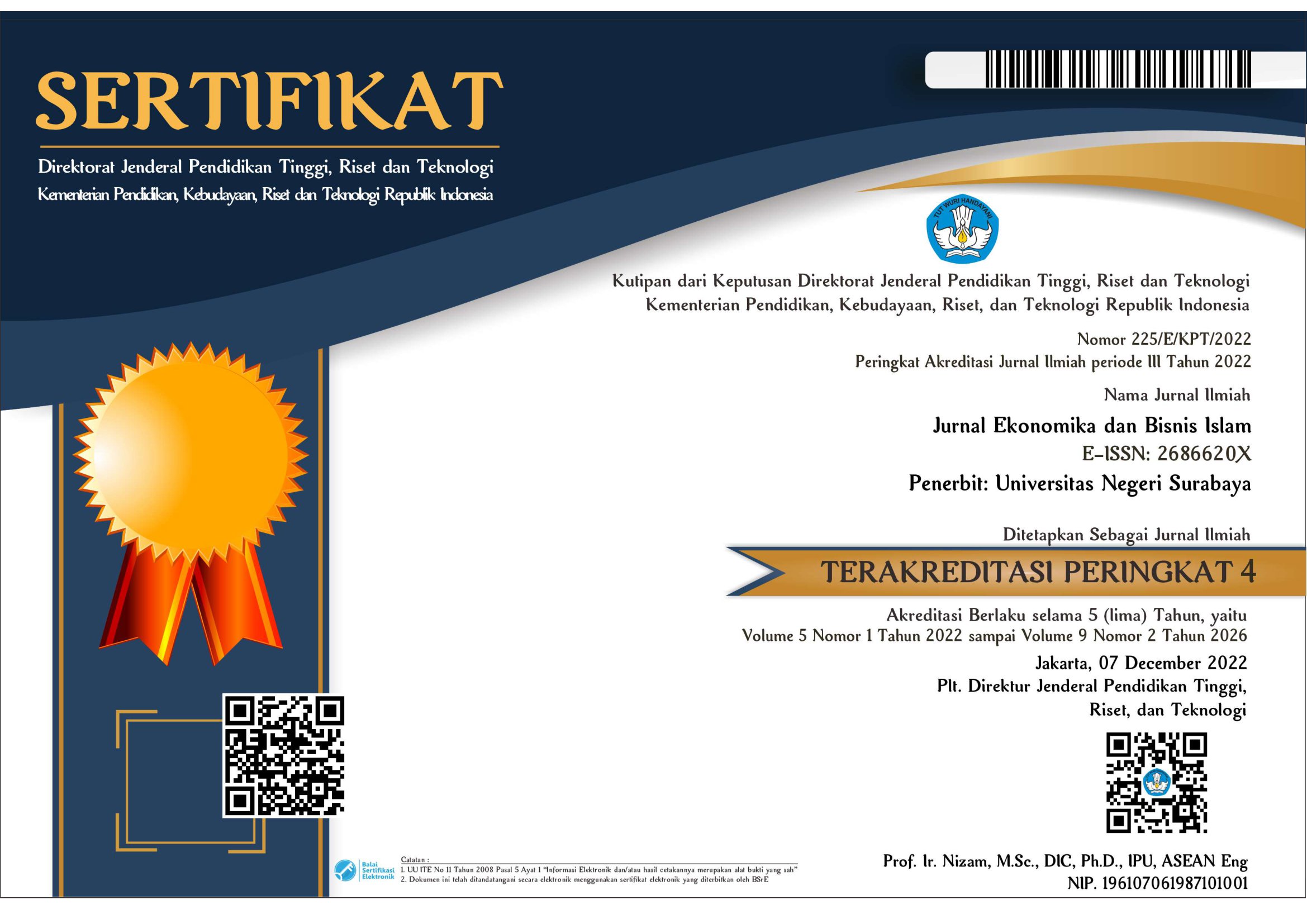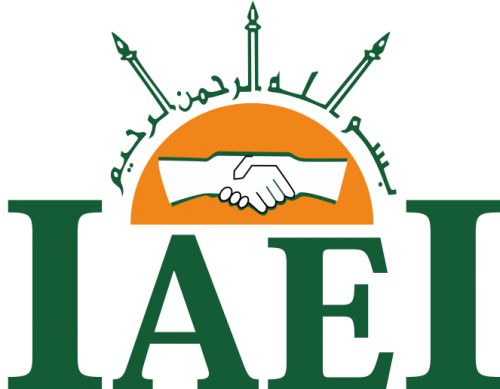Efektivitas Penggunaan E-Commerce Dalam Menunjang Penyerapan Zakat Studi Kasus Laz Al-Azhar.
DOI:
https://doi.org/10.26740/jekobi.v4n2.p13-25Keywords:
zakat, e-commerce, Al-Azhar, efectivityAbstract
Indonesia is a country with the largest Muslim population in the world. In 2020 the total population of Muslims reached 87,18 percent. One of the pillars of Islam is zakat, but according to research by BAZNAS, the Bogor Agricultural Institute (IPB) and the Islamic Development Bank (IDB) (2015), Indonesia has the potential for zakat of 217 trillion rupiah, but in 2007 BAZNAS reported that zakat absorbed was only Rp. 450 billion and increased in 2013 to Rp. 2.73 trillion or only about 1% compared to the national zakat potential. One LAZ that collaborates with e-commerce to collect zakat is LAZ Al-Azhar. This research aims to determine whether the zakat payment feature in e-commerce is effective in the LAZ Al-Azhar case study. This research is a qualitative research and uses phenomenological methods based on events from society. In this study, the technique of taking the subject in this study used purposive sampling and data collection techniques in the form of interviews, and triangulation of data sources was used as data validity. The results of this study state that the zakat payment feature in e-commerce in the LAZ Al-Azhar case study is effective. Even though it is considered effective, there are still many things that need to be improved, such as educating the public regarding this feature so that the distribution of zakat through e-commerce will be maximized.
References
Canggih, C., Fikriyah, K., & Yasin, A. (2017). Potensi Dan Realisasi Dana Zakat Indonesia. Al-Uqud : Journal of Islamic Economics, 1(1), 14.
Creswell, J. W. (2015). Penelitian Kualitatif dan Desain Riset: Memilih Diantara Lima Pendekatan. Pustaka Pelajar.
J.Moleong, L. (2014). Metode Penelitian Kualitatif (Edisi Revi). PT Remaja Rosdakarya.
Kementerian Agama Republik Indonesia. (2013). www.kemenag.com. 2013.
Mardiasmo. (2004). Otonomi dan Manajemen Keuangan Daerah (Vol. 4).
Miles, B. M. & M. H. (1992). Analisis Data Kualitatif Buku Sumber Tentang Metode-metode Baru (Vol. 1, Issue 2). UIP.
Nursid Sumaatmadja. (2006). Metodologi Pengajaran Ilmu Pengetahuan Sosial (IPS). In Alumni.
Ramanov. (2020, April 2). Tata Cara Membayar Zakat di Tokopedia Salam.
Statista. (2019). Tren Pengguna E-Commerce Terus Tumbuh. Databoks.Katadata.Co.Id, 1.
Sugiyono. (2012). Metode Penelitian Kuantitatif Kualitatif dan R&B. Alfabeta.
Sugiyono. (2013). Metodelogi Penelitian Kuantitatif, Kualitatif Dan R&D. Alfabeta.
Downloads
Published
How to Cite
Issue
Section
License
This work is licensed under a Creative Commons Attribution 4.0 International License.
 Abstract views: 668
,
Abstract views: 668
, PDF Downloads: 979
PDF Downloads: 979














